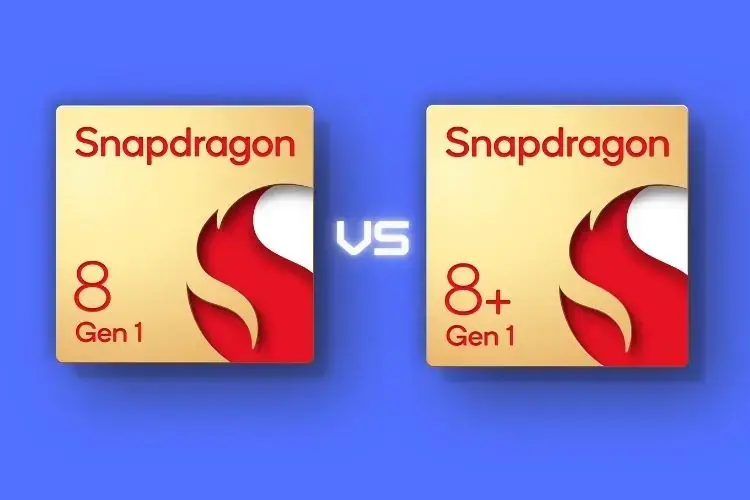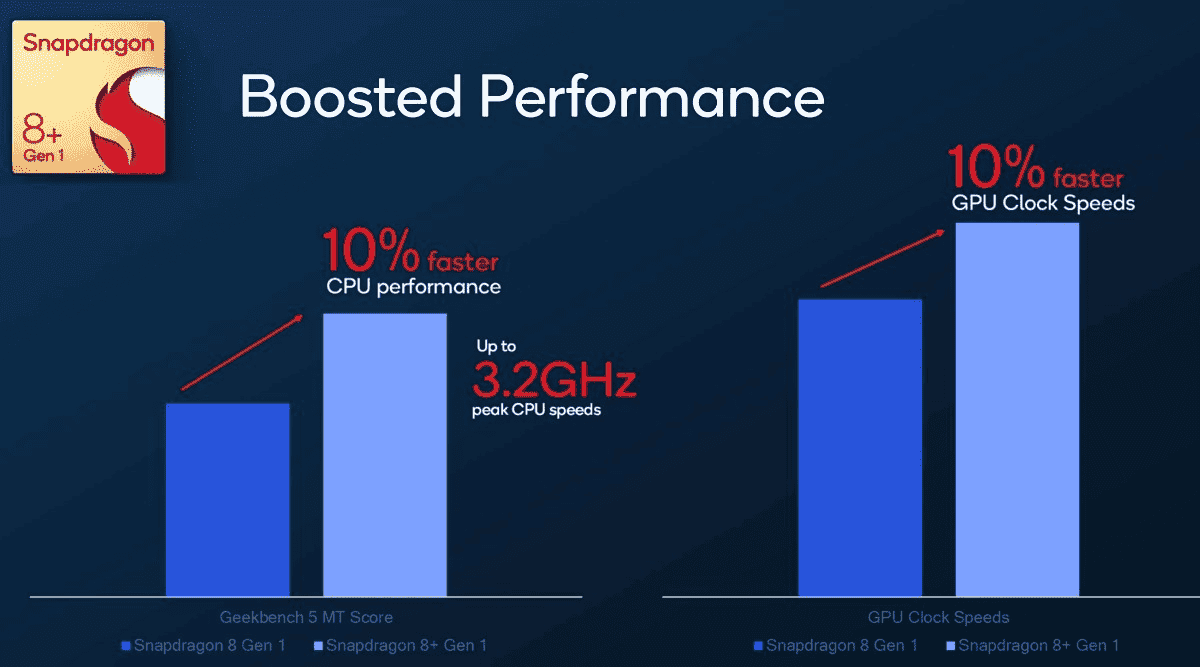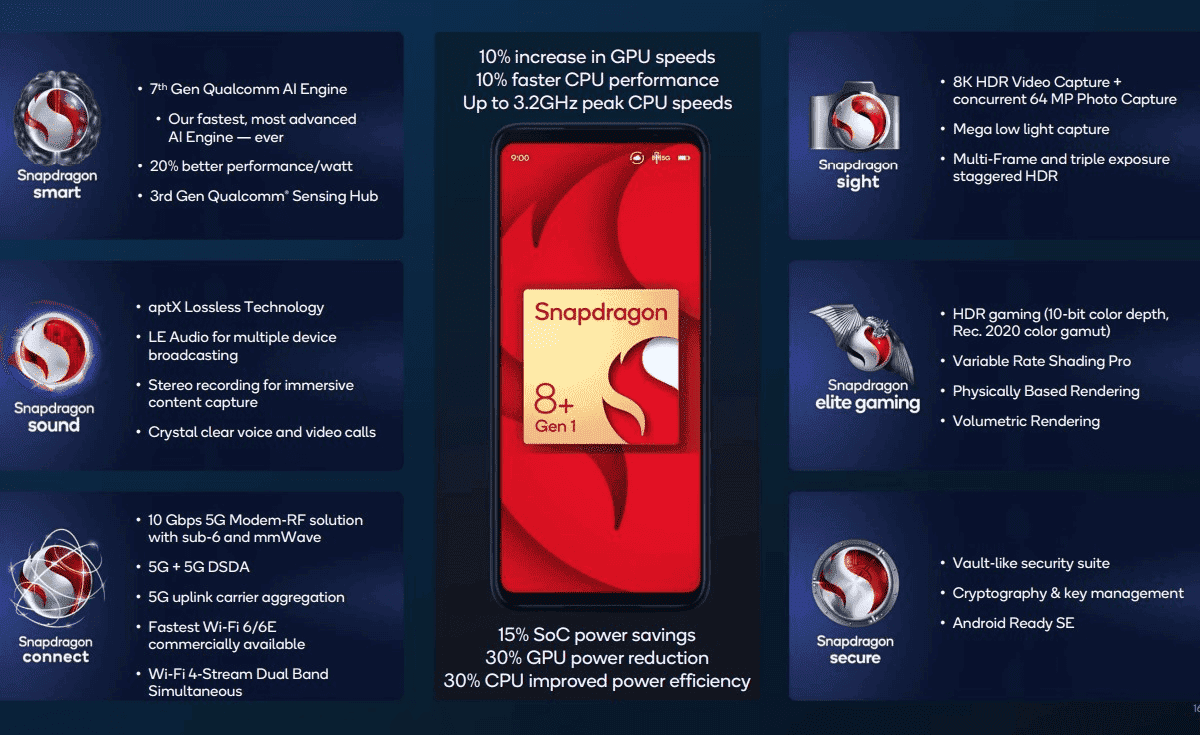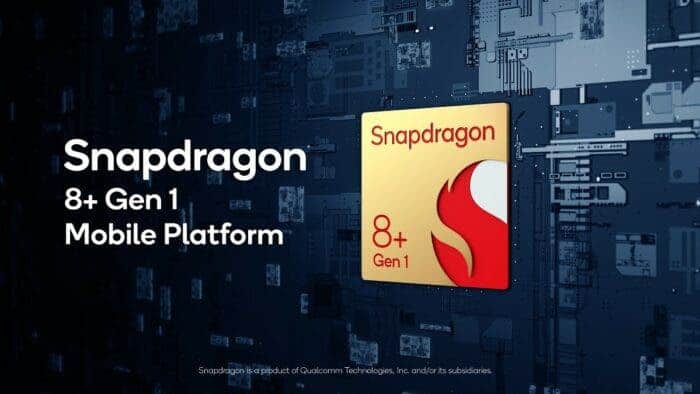American chip maker, Qualcomm is one of the major players in the smartphone chip industry. In fact, many brands, as well as consumers, look forward to its new chips. Although MediaTek is now seriously catching up with Qualcomm in the flagship chip market, the former still has an edge. As a follow-up to the SD 8 Gen 1, the company has announced a new flagship processor. Yesterday, Qualcomm officially announced the new generation chip in the Snapdragon 8 mobile platform, Snapdragon 8+ Gen 1. Well, that’s the name that the company choose. Snapdragon 8+ Gen 1. We all expected this chip to be called SD 8 Gen 1+ but this is not the case.

The new flagship platform, the Snapdragon 8+ Gen 1, achieves double breakthroughs in energy efficiency and performance. According to reports, this chip comes with significant changes in six aspects. This time, the company uses TSMC’s 4nm process on the Snapdragon 8+ Gen 1. Recall that the Snapdragon 8 Gen 1 uses Samsung’s 4nm process. However, the SD 8+ still uses an eight-core architecture including 1 Cortex X2 super core + 3 A710 large cores + 4 A510 small cores. Officially, its performance improves by 10%. While a 10% improvement in performance may be small, the chip also optimizes its power consumption. Relative to the previous generation, the power consumption of this chip reduces by about 15%.
Qualcomm SD 8+ Gen 1 SoC upgrades
Let us take a look at the six major upgrades of the Snapdragon 8 Gen 1+ SoC
1. Snapdragon Smart: supports the seventh-generation Qualcomm AI engine. It is further optimized based on the SD8 Gen 1 in terms of overall AI energy efficiency. It also provides nearly 20% energy efficiency improvement;
2. Snapdragon Sight image: Support 18-bit Qualcomm Spectra triple ISP and 8K HDR video shooting;
3. Snapdragon Sound Audio: Support Qualcomm aptX audio technology, combined with FastConnect 6900 mobile connection system, to create a top audio experience;
4. Snapdragon Elite Gaming: Supports all Snapdragon Elite Gaming features, including stereo rendering;
5. Snapdragon Connect: Based on the Snapdragon X65 5G modem and radiofrequency system, with the FastConnect 6900 mobile connection system. It provides up to 10Gbps downlink rate and an extremely fast uplink rate. It also supports 5G+5G dual-card dual-pass feature;
6. Snapdragon Secure Security: Supports Secure Processing Unit SPU and Qualcomm Trusted Execution Environment, compliant with Android Ready SE standard, bringing consumers a secure flagship experience.
Many OEM manufacturers and brands around the world will adopt the new generation of the Snapdragon 8 series. The press conference mentioned that Xiaomi will be the first to launch a smartphone with the new Snapdragon 8+ Gen 1. However, iQOO, Realme, and OnePlus’ new flagship will have smartphones in the first batch.
Now Qualcomm Snapdragon 8+ Gen 1 and MediaTek Dimensity 9000 both use TSMC’s 4nm process. The release of Qualcomm’s new mobile platform has put a lot of pressure on MediaTek.
Snapdragon 8+ Gen 1 – improves performance and conserves heat
Like we said earlier, the SD 8+ Gen 1 comes with decent improvements and modest speed. One of the major aspects of interest in this chip is probably the energy efficiency. We all know the major issue with the Snapdragon 8 Gen 1. The chip is fast but just like the Snapdragon 888, the 8 Gen 1 emits a lot of heat. Furthermore, these chips (SD888 and SD8 Gen1) also consume a lot of power. The new Snapdragon 8+ Gen 1 tackles these issues. The performance is 10% higher, whereas the power-efficient gets a significant upgrade of around 30%.
Gizchina News of the week

The cores configuration and architecture are the same, however, the peak ARM Cortex-X2 core can now reach 3.2 GHz. It matches the supreme speeds of the Snapdragon 870 from 2021. The 3 x ARM Cortex-A710 cores (Gold) get a bump to 2.75 GHz, whereas the Cortex-A510 (Silver) gets upgraded to 2.0 GHz. For comparison, the Snapdragon 8 Gen 1 had 3.0 GHz, 2.5 GHz, and 1.8 GHz clock speeds. The overall power efficiency on the SoC level has improved by 15%. According to the company, a phone using the same chipset can stream video for 1 hour and 30 minutes longer than one using the old chip. When it comes to light usage, the difference easily rises to almost 6 hours.
Hardware remains the same
Looking at the SD 8 Gen 1 and the SD 8+ Gen 1, the only difference is the manufacturer, efficiency, performance and power consumption. As for the hardware, both chips use the same. The SD 8+ Gen 1 supports up to 16 GB of LPDDR5 RAM and UFS 3.1 storage. The display driver can handle QHD+ at up to 144 Hz or 4K at 60 Hz, complete with 10-bit rendering, and HDR 10+ support. The connectivity comes from the Snapdragon X65 model with theoretical peak speeds of 10 Gbps. the chip also supports Wi-Fi 6/6E at up to 3.6 GHz. There is also support for Bluetooth 5.3 connectivity with support for aptX lossless and Bluetooth LE audio.

According to the chipmaker, the SD 8+ Gen 1 smartphones will come starting in Q3 (July and September). Unlike previous generations, the Snapdragon 8+ Gen 1 will appear on a lot more smartphones. There are many companies preparing new contenders. ASUS, Black Shark, Honor, iQOO, Lenovo, and Nubia. Moreover, we have Motorola, OnePlus, and Xiaomi with their “Ultra” flagships. Even Vivo, ZTE, and OSOM are preparing smartphones with the new chip. According to leaks, Samsung is preparing variants of its new foldable with the Snapdragon 8+ Gen 1.
Motorola confirmed to use the Snapdragon 8+ Gen 1
A few days ago, Chen Jin, general manager of Lenovo’s China mobile phone business department, announced that the Motorola flagship powered by Qualcomm’s Snapdragon 8+ Gen 1 will debut soon. Chen Jin claims that Motorola will bring an all-round improvement and a truly powerful SD 8+ Gen 1 flagship, with all-round innovation from ultra-high-pixel computing images to performance release to experience.
Motorola claims that the CPU power consumption of this new processor is reduced by about 30% compared with the SD 8 Gen 1. Furthermore, the GPU power consumption was also reduced by up to 30%. The company believes that the overall power consumption of the platform is reduced by about 15% relative to the SD 8 Gen 1. However, Snapdragon states that the overall power consumption improvement is 10%.
It is worth noting that in December 2021, Motorola launched the world’s cheapest Snapdragon 8 Gen 1 smartphone with a 2999 yuan ($448) starting price. According to Motorola’s pricing strategy, the upcoming new product is expected to be the most cost-effective Snapdragon 8+ Gen 1 flagship, which is worth looking forward to.





